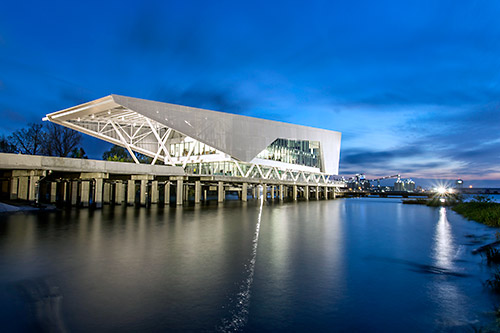Area Development

The award-winning Center for Coastal and Deltaic Solutions sits on the old municipal dock and houses the Water Institute of the Gulf.
Editor’s Note: This article was developed in collaboration with Baton Rouge Area Chamber.
The Water Campus, a world-class research center devoted to the study of coastal restoration and sustainability, opened in 2018 in Baton Rouge, Louisiana. When all phases of construction are complete, the 35-acre, $600-million campus will house more than 1.6 million square feet of collaborative research facilities and commercial space. Scientists here will study coastal threats and develop innovative solutions to protect these areas from the growing risks posed by climate change and rising sea levels.
The concept for the project was developed by the Baton Rouge Area Foundation, in response to severe coastal land loss issues impacting Louisiana. Political, academic, and nonprofit leaders took several post-Katrina trips to the Netherlands to learn water-management best practices from the Dutch — some of the foremost experts in the field. The Louisiana team quickly realized that coastal and deltaic solutions were needed around the world. Seeing how a state-of-the-art research center could leverage the city’s deep knowledge and expertise in water management and generate international collaboration and acclaim, the foundation teamed up with congressional, state, and local officials to develop a plan for the campus.
Developing over the next decade, The Water Campus will rise on 35 acres along the Mississippi, adjacent to downtown Baton Rouge. In that time, the number of researchers and support staff employed at the facility will expand to over 4,000. More than 1.8 million square feet of labs, research facilities and commercial space will enable them to carry out their vital work in a collaborative environment – studying coastal threats, formulating theories, exchanging ideas, and cooperating to arrive at innovative solutions that might never be possible working alone.
Full article here.